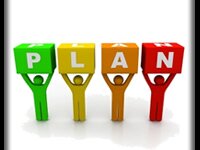Art - it's not just a form of expression or a leisurely pastime. Art is a powerful method of communication, an indelible element of our cultural heritage, and a pivotal player in education. When we intricately weave it into the educational tapestry, we transform the usual learning confines. The landscape evolves, taking strides beyond static textbooks and regimented curriculums, into a vibrant realm fostering creativity, nurturing critical thinking, and promoting emotional intelligence.
This exploration of the significant correlation between art and education invites you to delve into the intricacies of this compelling relationship. We'll highlight the multifaceted roles it plays in an educational setting, the influence of an art-inspired essay, and the effective, tangible strategies for harmoniously integrating creative expression into classrooms. Embark with us on this enlightening journey. Together, let's venture through the lively crossroads of art and education, reimagining learning through the captivating lens of artistic expression.
The Arts Unleashed: Expanding the Definition of Education
Picturing art within the context of education, our minds usually wander to traditional formats: painting, music, theater, dance, or sculpture. But the role of creativity in academia goes much further, finding connections with disciplines such as history, literature, and even mathematics.
Creativity, like a versatile artist, finds multiple forms to express itself. Visual creativity, for example, is more than just painting or sketching – it includes photography, filmmaking, and digital artistry. Each of these avenues can provide different insights, pushing learners to view their surroundings from diverse perspectives.
Music, too, plays a powerful role in education. From understanding the harmonious symphony of mathematics in music to the rhythmic cadences in language, music facilitates a profound comprehension of abstract concepts. Theater and dance, on the other hand, promote collaboration, empathy, and physical coordination, cultivating holistic growth.
Art isn't just a separate subject; it's a vibrant spectrum that extends and expands the conventional definitions of education. It encourages interdisciplinarity, breaking down the rigid walls between subjects. Whether it's exploring the geometry in a piece of visual art, understanding history through the rhythm of a period's music, or writing a reflective essay inspired by a piece of literature, art is there, intertwined with every aspect of learning.
Remember, education isn't about rote learning; it's about fostering a love for knowledge, creating thinkers, and developing individuals who appreciate the intricate tapestry of life. In this context, art is not an elective or an add-on; it's an integral element that broadens our understanding of education. By embracing it, we're expanding the horizons of learning, ultimately fostering an learning environment that is rich, diverse, and engaging.
In this article, we are exploring the profound potential of creative expression in reshaping the learning process, painting a vibrant picture of a future where art and learning go hand in hand. Join us as we continue this enlightening journey.
Art Essays: A Unique Approach to Learning
Art essays - these two words together may seem peculiar to some, but they symbolize a unique, immersive approach to learning. The essay, long regarded as the cornerstone of linguistic and analytical skills, when interlaced with the world of art, morphs into powerful tools of creative exploration and comprehension. This is where services like an art essay writing service can provide valuable assistance, not just in crafting an essay, but also in fostering a deeper appreciation and understanding of art.
The purpose of an art essay transcends the simple analysis of a painting or sculpture. It's an avenue for students to engage with, interpret, and contemplate art. These essays push learners to explore deeper layers, understand the implications of artistic choices, and articulate their responses. Through the process of writing about art, students develop the ability to observe attentively, interpret creatively, and articulate with precision.
Moreover, such tasks provide an avenue for interdisciplinary learning. Picture an essay exploring the intersection of art and history, where students analyze how Renaissance paintings reflected the sociopolitical dynamics of the time. Or, consider an essay where students elucidate the mathematical principles behind the architectural marvels of ancient civilizations.
The process of crafting an art essay also amplifies critical thinking skills. When faced with the task of deciphering an artwork's underlying themes and symbolism, students learn to analyze, hypothesize, and argue their perspectives. These are not just academic skills; they are life skills, equally applicable outside the confines of a classroom or an examination hall.
Art essays thus represent a fusion of critical and creative thinking, promoting a unique approach to learning. By pushing the boundaries of conventional assignments, this kind of essay encourages students to view education not as a linear progression but as a multidimensional journey of exploration. As we navigate through this journey, we will continue to examine innovative strategies that merge art and education, fostering an environment of creativity, comprehension, and personal growth.
Art-Integrated Curriculum: Benefits for Students and Educators
An art-integrated curriculum is a revolutionary approach that transcends the boundaries of traditional pedagogy, opening up a panorama of learning that's both profound and vibrant. With art incorporated into the very fabric of the curriculum, education transforms from a monotonous lecture into an interactive dialogue, replete with colors, sounds, movements, and imagination.
For students, the benefits of an art-integrated curriculum are manifold. Art helps bring abstract concepts to life, facilitating a deeper understanding of complex ideas. When a mathematical equation is visualized through an artistic lens or historical events are re-enacted through a dramatic play, learning becomes an engaging, enjoyable experience. Beyond cognitive development, art integration fosters creativity, enhances problem-solving abilities, and nurtures empathy and cultural awareness.
In the same vein, for educators, an art-infused curriculum serves as more than a teaching accessory. It's a space where they can use their creative instincts. This innovative approach offers an escape from traditional teaching confines, allowing them the flexibility to develop engaging and relevant lessons that cater to varied student learning styles. Furthermore, incorporating art into lessons often results in more vibrant class discussions, a more inclusive learning experience, and heightened student participation.
The fusion of art and curriculum doesn't deny the need for traditional academic subjects. Rather, it amplifies their impact, creating a holistic education system that encourages cognitive, social, and emotional growth. Be it composing a sonnet in English class, creating a collage to illustrate a scientific concept, or writing an insightful essay on a piece of music, art-integrated education is about connecting the dots and enhancing the overall learning experience.
As we continue this exploration of the entwining of art and education, let's envision an educational ecosystem where creativity is not an outsider but a vital participant, contributing to a rich, well-rounded, and inclusive learning experience.
Bringing Art to the Classroom: Practical Strategies for Educators
The idea of integrating art into the classroom can be both exciting and daunting for educators. How can one effectively weave it into various subjects? What practical strategies can teachers adopt? Let's delve into some concrete steps educators can take to infuse art into their classrooms, fostering an environment that stimulates creativity, curiosity, and comprehensive learning.
-
Incorporate creative imagery into lesson plans. Visual art is an excellent tool for making abstract concepts more tangible. For instance, when teaching about cell structure in biology, have students create detailed, colored diagrams. When studying geometry, explore the intricate patterns of Islamic art or the symmetry in nature through photography.
-
Blend music and literature. Whether it's studying the poetic structure of song lyrics or creating a soundtrack for a novel, the integration of music into literature classes can significantly enhance students' understanding and appreciation of both disciplines.
-
Explore history through visual culture. Works of visual art are historical artifacts that reflect the culture, values, and events of their time. Engage students in analysis of these visual pieces from different eras as part of history lessons to provide a richer, more immersive understanding of the past.
-
Encourage analysis essays. We've previously discussed the power of an art essay. Encourage students to write thoughtful papers examining pieces of visual culture, performances, or even architectural designs. This not only deepens their engagement with art but also hones their writing and analytical skills.
-
Facilitate creative expression. Encourage students to express their understanding of a topic through creative mediums. They could write a poem, choreograph a dance, or compose a song. This kind of activity allows students to connect with the material on a deeper level and caters to different learning styles.
-
Collaborate with fine arts teachers. Finally, collaborating with teachers from the field of fine arts can provide invaluable insights and resources for effectively integrating creativity into a wide range of subjects.
These strategies provide a roadmap for educators eager to bring the transformative power of art into their classrooms. By embracing such methods, we continue our journey toward an education system that is as enriching, diverse, and dynamic as the world of art itself.
Igniting Imagination through Arts in Education
As we conclude our comprehensive exploration of arts in education, it's clear that the landscape of learning is as vast and as vibrant as an artist's canvas, filled with boundless potential. Art, in its myriad forms, doesn't merely embellish our education system; it breathes life into abstract concepts, transforming the monochrome pages of textbooks into a vivid journey of discovery, creativity, and understanding.
Our deep dive into the art essay revealed the power of intertwining analytical and creative thinking, fostering an intellectually stimulating learning environment. The examination of an art-integrated curriculum highlighted the holistic benefits for students and educators alike, augmenting cognitive development and nurturing empathy, cultural awareness, and creativity. Our exploration of practical strategies served as a roadmap for educators to seamlessly infuse art into their classrooms, igniting a dynamic synergy that enriches traditional subjects and makes learning more engaging.
At its core, incorporating arts into education isn't just about adding aesthetic appeal to lessons – it's about sparking the flame of imagination and creating an environment that nurtures curiosity, empathy, and a passion for lifelong learning. When we advocate for the integration of art in education, we're not just delivering information; we're inspiring, engaging, and revolutionizing learning, shaping a future where education strikes a dynamic balance between analysis and creativity, facts and interpretation, knowledge and imagination.










